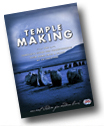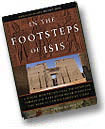 |
||||||
|
DIATONIC RATIOS Notes in music are related to each other by specific ratios. These ratios determine the 'space' between each tone, and in turn define the notes. Although to the human ear the notes sound as if they are equally spaced, the following chart shows that in fact the ratios are more complex. For example, the ratio between C and D is 9/8:
A note in, say, the second octave is written: F ' , or F2, or F in the second octave. These ratios maximize the harmonics in music.
THE CROP CIRCLE DIATONIC CODE Musicians have used the musical notes of the first octave to encode messages in their rnusic. For example, the last fugue of Bach keeps repeating notes B-A-C-H. The Circlemakers, since 1988, have also been encoding messages- by including diatonic ratios, and hence sets of notes. These notes, when applied to the Boethian Scale of 500 AD (below) provide sets of initials.
Definition: a geometry is a diagram with rotational symmetry, unembellished and containing a theorem that can be proved by Euclidean logic and construction, and which generally defines a pair or more of diatonic ratios. The Boethian Scale shows how the diatonic ratio for the note D, for example, is doubled each octave with frequencies of 9/8, 9/4, 9/2, and 9/1 (9). On the keyboard, those ratios correspond to the letters D, I, P and W. In the Oliver's Castle geometric crop formation (1993), Hawkins found two diatonic ratios of 1/1 and 9/1. These correspond to C and W on the keyboard. When geometries are tested against lists of initials, the code appears to fit one and only one list the first 25 presidents of the Society for Psychical Research of London. The analysis covers all rotationally symmetric diagrams available in Great Britain up to September 1993. The T-number is from the Andrews Catalog: 1988 Corhampton T4 CR Charles Richet
What is the probability of this happening by chance? With 26 letters in the alphabet there are 1/2 x26 x27 possible pairs of initials, AA, AB, AC etc. So the probability of any one random pair hitting any one of the 25 names on the list is 25/ (1/2 x26 x 27) = 0.071. There are 9 geometries with 9 hits. By Bernoulli's binomial theorem the probability is a siqnificant 1.7 billion-to-one in favour. Interestingly enough, Littlebury Green gives by what we could call "mathematical art," one more name on the list Myers, a fouader of the Society and pioneer in telepathy. The correlation is statistically compelling, with a confidence level much higher than 99.9%. Strict criteria have been used, with all available geometries included up to the date of publication of the code. Eight others are listed in the Andrews catalog but with no survey or photo data. Even assuming the worst case (i.e. that none of these would fit, making 9 hits in 17 tries) the odds remain a million-to-one in favor. What does this result mean? Skeptically one could say that a secret group of hoaxers knew of the list and decided to memorialize these famous pioneers of the paranormal in the fields of England. Yet, as it stands, the list could be the target for confirming that a Paranormal code has indeed been received as suggested by R. Thouless, a later SPR president. (JSPR Vol.38, No.686, p.172, 1955.) |
||||||||||||||||
 |
Back to Euclidean geometry
|
|||||||||||||||
 |
 |
 |
||||||||||||||
|
Return to Case Histories
|
||||||||||||||||
 |
||||||||||||||||
 |
|||||||

